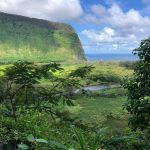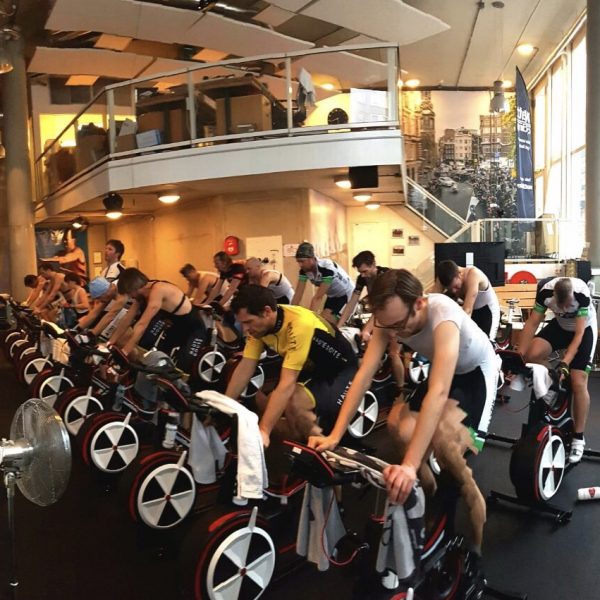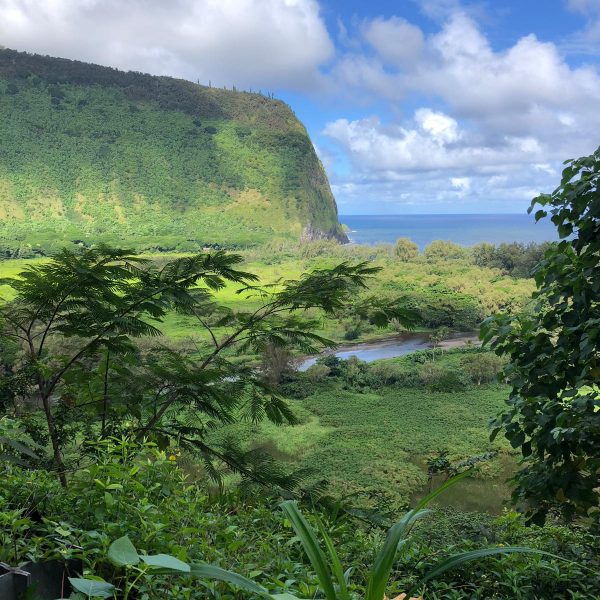We love climbing mountains by bike. The nature. The views. The hard physical challenge. The reward of a magnificent feeling once you’ve reached the top. It’s addictive. And because we’re still fairly young and quite fit we can climb any mountain we want. At least that’s what we think…

At the moment of writing this post 14 guys of our group are in their early forties and 2 guys in their early thirties. So basically we’re past our prime (booooohhh father time) and our physical capabilities will get less as time passes by. We’re aware that the clock is ticking and we need to find out sooner than later if we can really go up any possible mountain on the planet.
Just six words typed in the all knowing Google engine would give us our biggest sportive life challenge to date: “most difficult climb of the world”. The name Mauna Kea immediately popped up. We’ve never heard of this mountain. Or from what we quickly found out… we’ve never heard of this…. humongous volcano.

The location of this beast? A place with only 13 letters in their alphabet. Hawaii! Hmmm, this certainly gave a silver lining to our newly set challenge. Who doesn’t want to cycle in this unique and beautiful landscape :-).
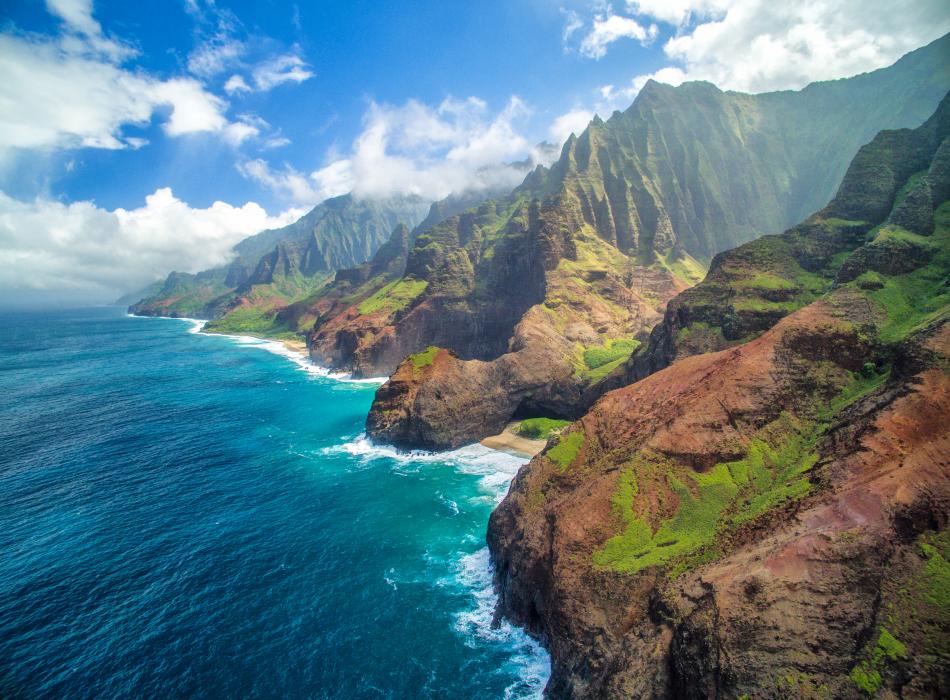
Mauna Kea, the most toughest and difficult climb in the world
Ok, according to whom?! And why?! Climbbybike indexes almost all climbs in the world. And it ranks them based on three parameters: H = difference in height, D = distance in meters, T = top of the mountain in meters.
Put these parameters in this formula: (H*100/D)*2 + D/1000 + (T-1000)/100, make sure you only rank climbs that are ridable by road bike, et voila… there you have your ranking of most difficult climbs. With Mauna Kea on the number one spot.

The formula makes a lot of sense. H and D give you your steepness gradient and the length of the climb, while T gives credit to the decrease of oxygen while you climb higher and higher into the clouds.
When we continued our research we quickly saw that the Climbbybike formula also worked in a real life setting. There were actually quite some blogs and video’s of super experienced riders that climbed hundreds of mountains, including the most famous ones, and they all confirmed Mauna Kea was the most brutal one they ever climbed. Perfect, we really found our target!
Trivial pursuit, question two. Do you know the highest mountain of the world? That’s an easy one, right? Mount Everest you say? Bzzzzt! Wrong! Mauna Kea is king again. Measured from the ocean’s bottom Mauna Kea is 10,203 meters tall. The Everest comes second with 8,850 meter.
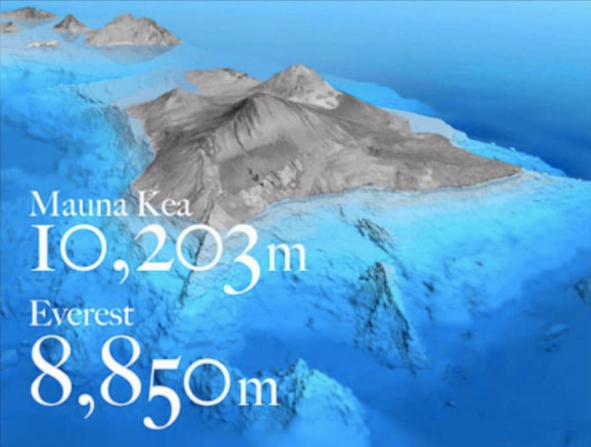
From the Sea to the Stars
Now let’s dive a little deeper into the specs of this monster. You can climb Mauna Kea from two sides. The climb from Hilo is the toughest with a length of 69 kilometer and an average gradient of 6.1%. You start at sea level and end at 4,192 meters. Wow, that’s one hell of a climb.
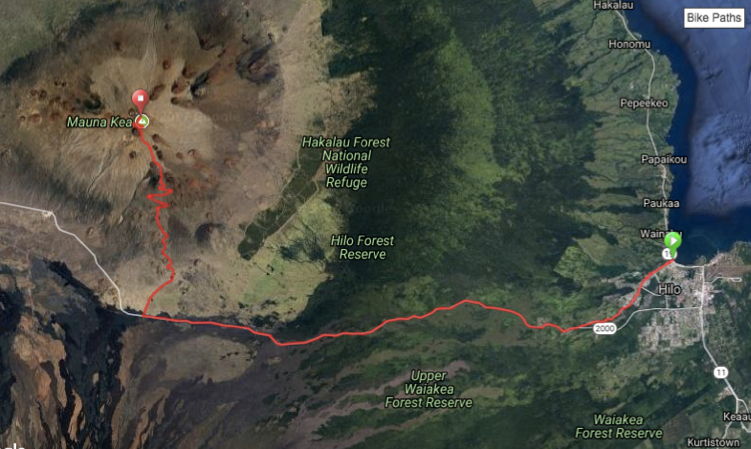
You can chop this climb into two pieces where the last piece can be divided into three different sections. The first 45 kilometer are pretty straight forward with good roads and an average gradient of 4.5%. You can compare this a bit with the climb El Teide in Tenerife, Spain.
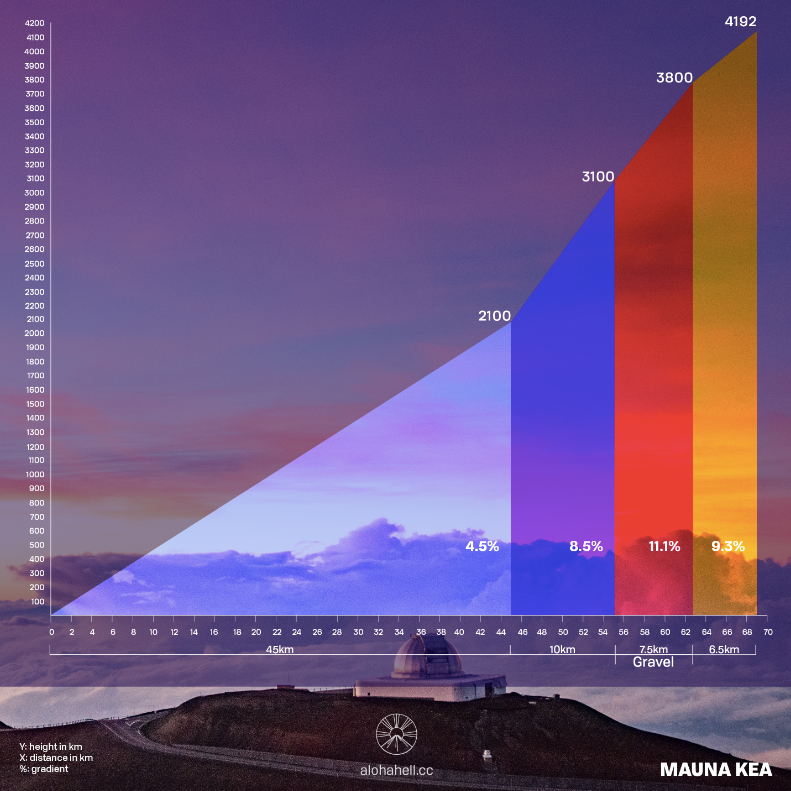
After completing this part you’ve become pretty tired but then actually the real pain just started. The last 24 kilometer average 9.9% (!) and the altitude is having a bigger and bigger impact.
The first section of the last 24 kilometer has nice asphalt and is 10 kilometer long with a gradient of 8.5%. The second section is where we will most likely enter the “aloha hell” phase. The asphalt stops and loose lava gravel begins. This gravel stretch is 7.5 kilometer long and averages a very painful and breathtaking 11.1% (!!).

Yippie, you’ve reached the end of the gravel get off your bike and kiss the asphalt again! Uhm, not so fast. Now the lack of oxygen gets to your head and limits your pushed watts immensely. And with a gradient of 9.3% you’re not getting any out of jail card. To the contrary!
Strava KOM – Hilo to Mauna Kea Summit
Right now you need to cycle this climb in less than 5 hours if you want to go for the prestigious Strava KOM record. You need to complete the climb within 4:45:53 to be exact, because the KOM is set at 4:45:54 by Kevin Metcalfe from the US of A. Kevin’s averaged 14.4 km/u and pushed 235 watts on this segment. Number two is German Rapha rider Steffen Weigold with a time of 4:46:32. Wow, only a difference of 38 seconds, that must be a little bit painful for Steffen. But, hey, that’s life. If you have Hawaiian “pona” you’re ok with this.

We have one guy in our group, Levi, that actually has a chance to get this prestigious KOM:
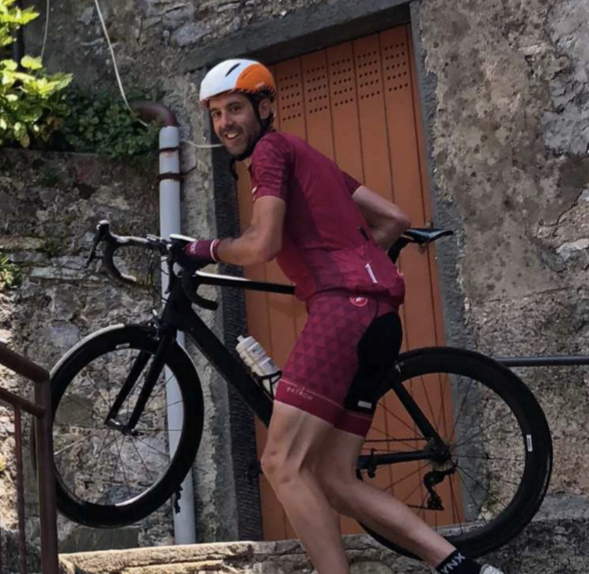
And checking out our competition gave us some hope. Because Kevin is not really young anymore. Actually, you can say he’s a little bit old. So if Levi fails to get the KOM he actually has quite some time to train much and much harder and try again until he hits around 55 years of age. Because that’s how old Kevin is.
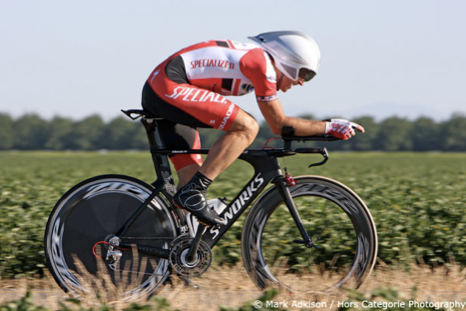
But don’t think this KOM is easy to catch. To the contrary. Kevin is world holder of the hourly record for 55+ riders and his training schedule is insane. He goes on his indoor bike every day and rides 10% below his FTP for two times for twenty minutes with a little easier 10 minutes in between. In short, Kevin rocks!
Levi has a one time shot at this KOM. If he doesn’t get it now, he will most likely never get it. Hawaii is not around the corner and raising two young kids and having a demanding job eats up your time to train very quickly. So, yup, this is a once in a lifetime shot. No pressure, Levi :-).
Mauna Kea Climb in Visuals
We can understand if it’s still quite difficult to grasp the magnitude of this crazy climb. So we made some nice visuals. Every cycling connoisseur knows the famous mountains of the Tour de France, Giro d’Italia and Vuelta. How do they stack up in terms of length of the climb compared to Mauna Kea.
Well, volcano Mauna Kea simply swallows them all:
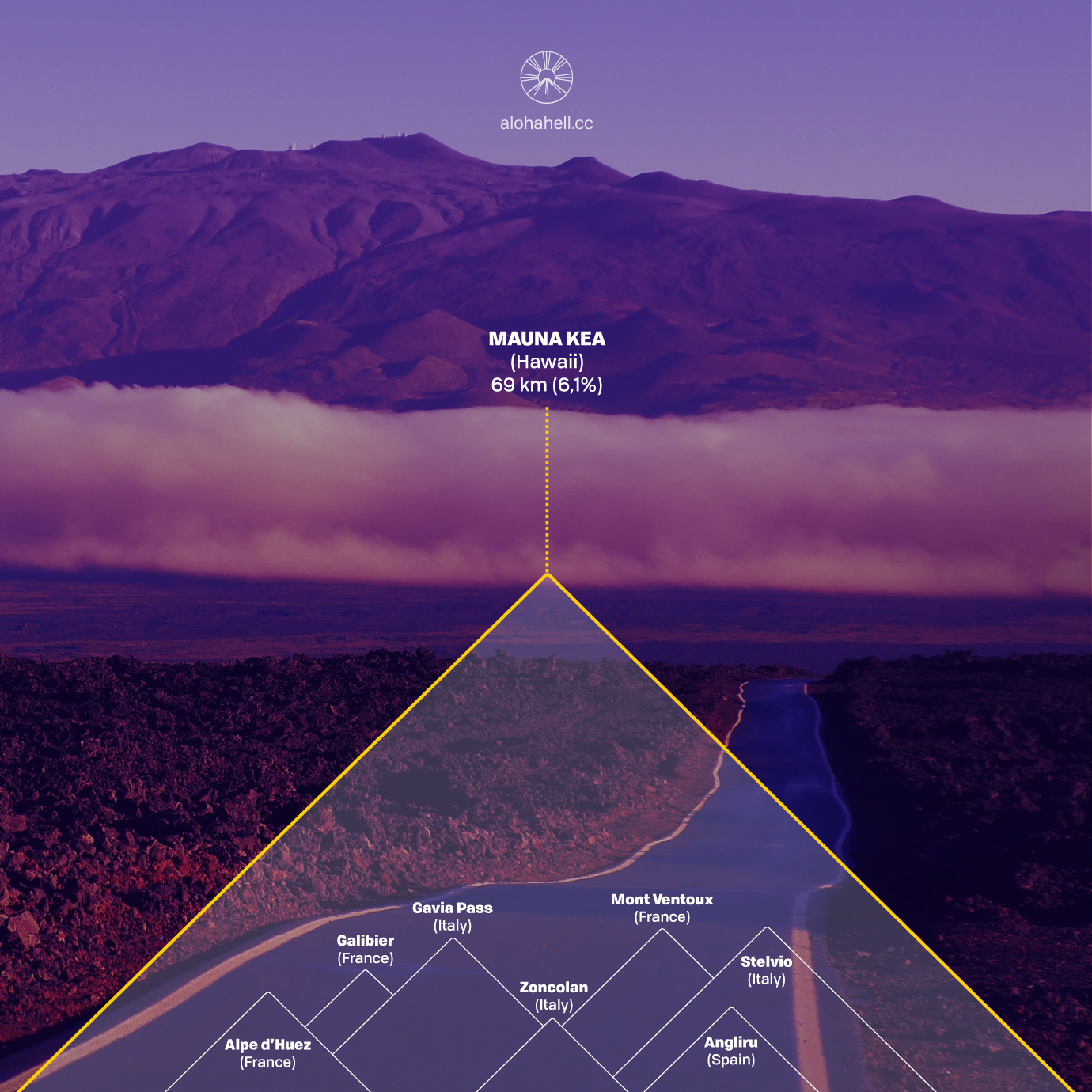
Ok, but length is just one thing. These famous European mountains surely must rank high on the Climbbybike ranking, right? They’re famous because these climbs are very steep and still quite long. Well, they don’t even show up in the top 100…. The two other big climbs in Hawaii, Haleakala and Mauna Loa, climbs we will also ride during our epic trip, are also ranked much higher than their European counter parts.
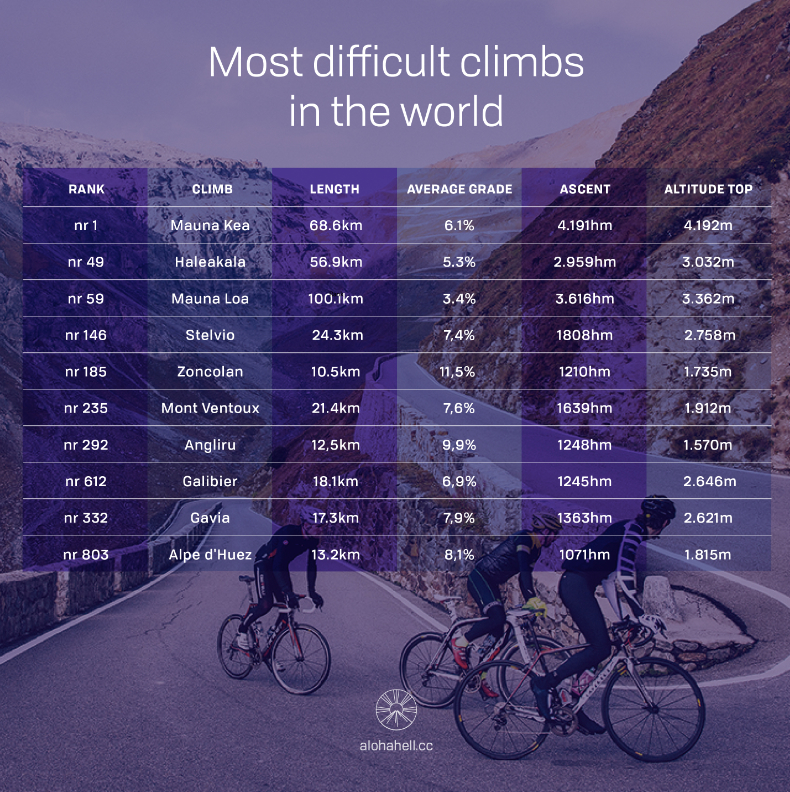
And we talked about the lack of oxygen being a major issue to deal with. But how big is that impact really? We searched the internet and found two research papers, one from Bassett and one from Peronnett. At 7,000 feet (2,134 meter) you only have around 90% of your available aerobic power compared to sea level. At the top of the Mauna Kea (4,192 meter) you can only push 70-75% of what you could achieve at sea level. Wow. This thin air certainly doesn’t help. Especially when you already pedaled more than 4 hours with a constant pressure on your legs.

To conclude this blog post. Mauna Kea is the most toughest mountain of the world because of it’s length, lack of oxygen at higher altitudes, a very tough gravel section where your tires easily slip away and big gradients at the last 24 kilometer. We, little cyclists, can only have a huge amount respect for this sacred mountain. But we can’t wait to conquer the Kea!


